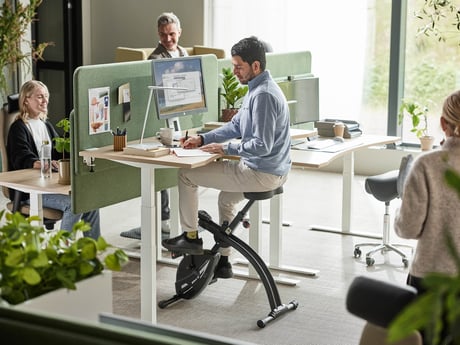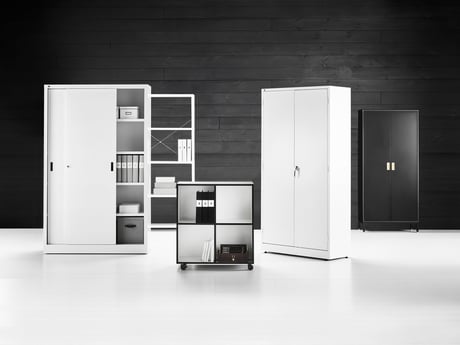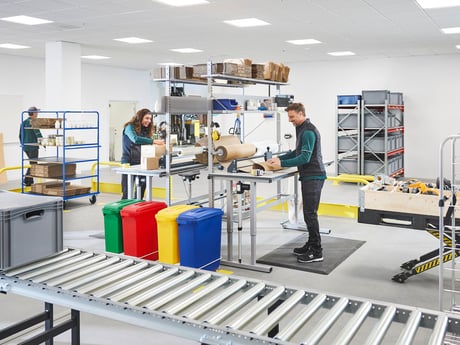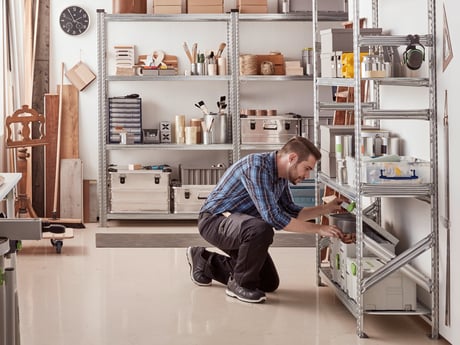- AJ Products UK
- Blog: Tips to Inspire Happiness at Work
- Improving the work environment
- How to create a collaborative workspace to improve teamwork
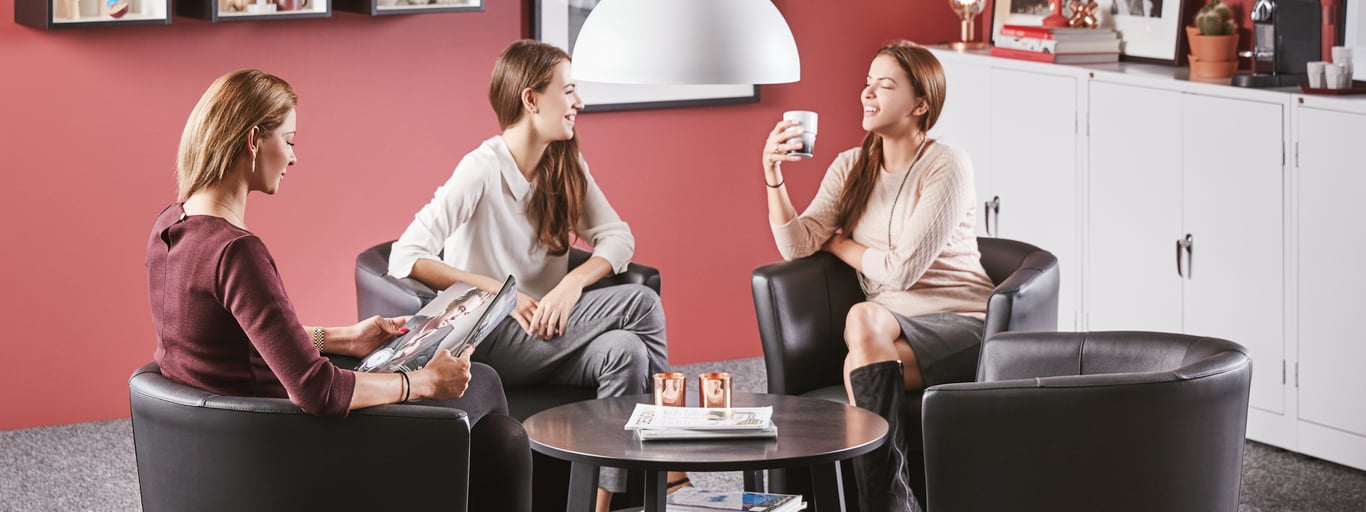
Creating a Collaborative Office: Design Tips for Effective Teamwork
A collaborative office encourages impromptu meetings, brainstorming sessions, and cross-team interactions that might not happen otherwise. Thoughtfully designed shared work areas can improve communication, boost creativity, and foster a stronger team culture.
1. Different spaces for different needs
Not all collaboration happens the same way. Some discussions are brief, others require focus and privacy.
- A small seating cluster in the corner of the office will be ideal for some quick meetings
- Private meeting areas with proper meeting table and chairs support in-depth discussions.
2. Flexible furniture for collaborative spaces
The most successful collaborative offices offer flexible seating options. Choose office furniture for collaborative spaces that can be easily rearranged to suit different activities.
- Soft seating and mobile chairs encourage casual conversations.
- Booths offer privacy and comfort for team discussions.
- Modular tables and desks allow quick reconfiguration for brainstorming sessions or workshops.
3. Accesible power and Technology
Having plenty of accessible power outlets is essential so that employees can charge their laptops and mobile devices while they work. USB sockets are a smart alternative if the space doesn’t lend itself to power sockets. Outlets should be available near seating areas as well as integrated into meeting tables. Staff should never have to rearrange the furniture just to plug in their devices. It goes without saying that Wi-Fi must be fast and reliable.
4. Tools to support tools idea sharing
To make the space suitable for all types of meetings and teamwork, think about what equipment would support teamwork. Consider:
- Whiteboards for sketching and brainstorming.
- Smart screens for sharing digital presentations.
- Pinboards or digital collaboration platforms to track ideas.
These tools make the collaborative office functional for every type of teamwork, from quick discussions to detailed planning sessions.
5. Design and aesthetics matter
Informal spaces are an opportunity to bring some more interesting and fun design elements into the office. The space should inspire creativity and strike a careful balance between aesthetics and comfort. A stimulating colour scheme with inspiring artwork or design features is important, but you should also focus on getting the right lighting and acoustics. Natural light is best if possible while smart acoustic panels improve the soundscape by reducing the disruptions from surrounding areas and muffling conversations to provide more privacy.
